Key Takeaways
1. The Great Power Shift: Mega-Philanthropy's Undemocratic Rise
To put things differently, we face a future in which private donors—who are accountable to no one—may often wield more influence than elected public officials, who (in theory, anyway) are accountable to all of us.
Unprecedented wealth. A new Gilded Age has seen an explosion of wealth at the top, with figures like Mark Zuckerberg and Priscilla Chan pledging billions. This vast accumulation, often exceeding the budgets of entire states, creates an almost unfathomable sum of money available for philanthropic endeavors. While seemingly benevolent, this concentration of wealth in private hands raises significant questions about democratic accountability.
Declining government capacity. This surge in private giving coincides with a marked decline in government's ability to address societal problems. Decades of budget cuts, political gridlock, and growing mandatory spending on entitlements have left the public sector with diminishing discretionary funds. This creates a vacuum that wealthy philanthropists are increasingly filling, shifting power from publicly accountable institutions to private individuals.
A troubling paradox. The rise of mega-philanthropy presents a paradox: while it offers hope for solving complex problems, it also deepens concerns about civic inequality. The wealthy, already wielding immense influence through politics and business, are now extending their reach into public life through philanthropy, often with little oversight. This power shift is one of the biggest, yet least understood, stories of our time.
2. Diverse Motivations: The "Hyperagency" of Wealthy Givers
Great expectations and grand aspirations occupy people across the financial spectrum. What is different for wealth holders is that they can be more legitimately confident about actualizing their expectations and aspirations.
Beyond altruism. While gratitude, a sense of responsibility, and personal fulfillment are common drivers for giving, a unique trait among the wealthy is "hyperagency"—a profound belief in their ability to effect large-scale change. This conviction stems from their success in business, where they've often solved problems and disrupted industries, leading them to approach philanthropy with similar ambition.
Varied paths to giving. Donors come from diverse backgrounds—tech, finance, old economy—and their philanthropic journeys are equally varied. Some, like William Ackman, decide to become philanthropists early in life, while others, like John Arnold, are drawn in by specific issues or a desire to give back. Many are motivated by a desire to avoid estate taxes or the perceived negative effects of inherited wealth on their children.
Psychological rewards. The act of giving, especially when it yields tangible impact, provides immense psychological satisfaction. Ed Scott, a Silicon Valley millionaire, described a "Helper's High" after his first significant gift, transforming his focus from pure wealth accumulation to making a difference. This positive feedback loop often encourages even greater and more ambitious giving.
3. Shaping Policy: Billionaires as Ideological Grandmasters
I ask our staff every year to have an examination of conscience at night where they ask themselves ‘did all of my work go for the benefit of those with less power than me?’ And if the answer is no, you’re not doing it right.
The war of ideas. Wealthy donors increasingly use philanthropy to influence national politics and policy, often through think tanks and advocacy groups. Figures like Pete Peterson have spent fortunes to push specific agendas, such as deficit reduction, demonstrating how private money can shape public discourse and policy priorities. This is a "war of ideas" where philanthropists act as grandmasters, funding intellectual infrastructure to advance their worldview.
Conservative dominance. For decades, conservative philanthropists have excelled at this strategy, building powerful institutions like the American Enterprise Institute (AEI), Heritage Foundation, and Cato Institute. These groups, heavily funded by billionaires like Bruce Kovner and the Koch brothers, craft narratives and policy proposals that favor free markets, limited government, and lower taxes, often influencing legislation and public opinion.
Liberal counter-mobilization. In response, liberal donors, including Herb and Marion Sandler, have created their own policy powerhouses like the Center for American Progress (CAP) and networks like the Democracy Alliance. These groups aim to push back against conservative dominance, advocating for social justice, economic equality, and environmental protection. This ideological arms race, fueled by philanthropic dollars, intensifies political polarization and ensures that policy debates are heavily influenced by the wealthy.
4. Remaking Cities: Super-Citizens Redefine Public Spaces
If the democratically-directed public sector is shirking, to some degree, its responsibility to level the playing field, more of that role must shift to the private sector.
Private urban architects. Philanthropists are literally reshaping the physical and cultural landscape of American cities. Barry Diller and Diane von Furstenberg's "Diller Island" in New York, Richard and Nancy Kinder's Bayou Greenways in Houston, and George Kaiser's riverfront park in Tulsa are prime examples. These projects, often costing hundreds of millions, demonstrate how private wealth can drive urban development on an unprecedented scale.
Filling the void. This trend is largely a response to the decline of public funding for urban infrastructure and services. As city budgets strain under pension costs and reduced federal aid, wealthy donors step in, often bypassing traditional democratic processes. While these projects can revitalize areas, they also raise questions about who decides public priorities and who truly benefits, sometimes leading to gentrification and displacement.
Local influence, global reach. Donors like Amos and Barbara Hostetter in Boston, or the Pritzker family in Chicago, wield immense local influence, shaping everything from arts institutions to education and transportation. Their philanthropic efforts, often combined with political donations and civic leadership, create a new class of "super-citizens" whose private decisions have profound public consequences, often with little public accountability.
5. Disruptive Giving: The Venture Capital Approach to Social Change
The Parker Foundation will apply the lessons learned from Silicon Valley start-ups to our philanthropic initiatives. We must move fast, make concentrated bets based on our convictions, have the courage to make mistakes and learn from them.
Hacker philanthropy. A new breed of philanthropists, particularly from tech and finance, are adopting a "hacker" or venture capital mindset. Sean Parker, Dustin Moskovitz, and Bill Ackman exemplify this approach, emphasizing early, fast, and risk-taking giving aimed at systemic change. They seek "hackable problems" where their capital can be decisive, often rejecting traditional, cautious philanthropic models.
"Hits-based" strategy. These donors embrace a "hits-based" approach, expecting many failures but hoping for a few major breakthroughs that can transform entire systems. This contrasts with traditional philanthropy's incremental gains. Examples include Parker's $250 million for cancer immunotherapy and Moskovitz's large investments in direct cash transfers to the poor, aiming to disrupt established aid models.
Impatient capital. Many "disrupters" are committed to "giving while living," deploying their fortunes rapidly rather than endowing perpetual foundations. They believe urgency is key to maximizing impact, especially on problems that will only become more expensive to solve later. This impatient capital amplifies their influence, but also carries risks, as misguided experiments can cause significant disruption in people's lives.
6. Strategic Leverage: Courts and Data as Tools for Impact
The primary funder, by far, is the government. And the leverage of making the government’s money in the education system work better is huge, substantially more impactful than the value of philanthropic dollars.
Litigation as a lever. Philanthropists increasingly use litigation to bypass legislative gridlock and achieve policy change. Dave Welch's funding of Vergara v. California, challenging teacher tenure laws, and Chuck Williams's support for the Williams Institute in the fight for LGBT rights, demonstrate how targeted legal action can reshape public policy. This strategy leverages the courts to advance agendas that might be stalled in political bodies.
Evidence-based policy. John and Laura Arnold are leading proponents of evidence-based philanthropy, investing millions to ensure that social programs and government policies are backed by rigorous data and proven effectiveness. They aim to shift decision-making from intuition to evidence, believing that this "stronger due diligence" is the ultimate form of leverage to improve society.
Influencing government from outside. These strategic funders recognize that government remains the largest funder of social programs. Their goal is not to replace government, but to improve its efficiency and effectiveness by:
- Financing pilot programs and experiments that government won't risk.
- Developing data-driven tools and research to guide policy.
- Supporting advocacy that pushes for rational, evidence-based reforms.
This approach allows philanthropists to exert significant influence over public spending and policy without direct electoral accountability.
7. Advocacy and Influence: Funding the War of Ideas
It is possible to engage in politics and advocacy for the public good.
Targeted advocacy. Philanthropists are pouring unprecedented sums into advocacy groups to influence policy on specific issues. Michael Bloomberg's $130 million commitment to the Sierra Club's "Beyond Coal" campaign is a prime example, successfully shutting down hundreds of coal plants through aggressive litigation and public pressure. This funding helps overcome "collective action problems" where diffuse public interest struggles against organized industry power.
Blurring lines. The distinction between charity and political advocacy is increasingly blurred. Tax-deductible donations to 501(c)(3) organizations often fund activities that directly aim to influence legislation or public opinion, mirroring the goals of political campaigns. This allows wealthy donors to subsidize their policy preferences with taxpayer money, amplifying their voice in public debates.
Media and messaging. Funders also invest heavily in media and messaging to shape public discourse. Grants to news organizations for "education reporting" or the creation of ideologically aligned news sites (like Campbell Brown's education news site) ensure that specific viewpoints gain prominence. This comprehensive approach—combining policy research, legal action, and media influence—allows philanthropists to exert powerful, often unseen, control over public narratives.
8. Networked Philanthropy: Amplifying Donor Power Through Collaboration
We have the students and the teachers, and we’re putting them all together.
Strength in numbers. Recognizing the limits of individual giving, philanthropists are increasingly forming networks to pool resources and coordinate efforts. Groups like Women Moving Millions, New Profit, the Democracy Alliance, and DonorsTrust mobilize diverse donors, from tech billionaires to inherited wealth, to amplify their collective impact on specific causes or ideological agendas.
Strategic coordination. These networks provide strategic guidance, helping donors identify high-impact opportunities and navigate complex philanthropic landscapes. Women Moving Millions, for instance, galvanized wealthy women to give over $600 million to gender equality, while the Democracy Alliance coordinates liberal donors to fund progressive policy infrastructure. DonorsTrust, on the conservative side, channels "dark money" to right-wing groups, often in secrecy.
Efficiency and influence. Networks offer efficiency for busy donors who want to maximize their philanthropic "return on investment" without building their own large foundations. By centralizing expertise and grantmaking, they can deploy capital more strategically and exert greater influence than individual donors acting alone. This collaborative model is a growing feature of modern philanthropy, concentrating power in the hands of organized wealthy groups.
9. Inherited Influence: The Rise of Philanthropic Dynasties
I don’t really think that, as a society, we want to confer blessings on generation after generation who contribute nothing to society, simply because somebody in the far distant past happened to amass a great sum of wealth.
Beyond inherited wealth. While many billionaires, like Warren Buffett, express discomfort with dynastic wealth, leaving fortunes to foundations often creates a new form of inherited power. Descendants, like Katherine Lorenz (George Mitchell's granddaughter) or Warren Buffett's children (Susie, Howard, Peter), gain immense influence by controlling multi-billion-dollar foundations, often for generations.
Heirs as activists. Contrary to the stereotype of idle rich kids, many philanthropic heirs are highly engaged and activist. They often grow up with a post-materialist worldview, leading them to support progressive causes like environmental protection, social justice, or gender equality. This "Rockefeller syndrome" means inherited philanthropic power doesn't necessarily reinforce conservative privilege.
Prepared for power. Many heirs, like Emma Bloomberg or Carrie Walton Penner, are rigorously educated and trained for leadership roles in philanthropy. They bring expertise and dedication to their work, wielding influence over public institutions like education systems or global health initiatives. This raises questions about civic equality, as unelected individuals born into privilege exert significant control over societal direction.
10. New Medicis: Private Patrons Reshape Arts, Science, and Education
For better or worse, the practice of science in the 21st century is becoming shaped less by national priorities or by peer-review groups and more by the particular preferences of individuals with huge amounts of money.
Patronage on a grand scale. Wealthy donors are increasingly becoming the "new Medicis," funding arts, sciences, and higher education on an unprecedented scale. Institutions like the Howard Hughes Medical Institute ($18B endowment), the Getty Center ($12B endowment), Eli and Edythe Broad's art museum and science institute, and Alice Walton's Crystal Bridges Museum demonstrate this shift. These private entities often rival or surpass public institutions in resources.
Filling funding gaps. This surge in private patronage often fills voids left by declining government support for these sectors. As federal and state funding for scientific research, arts agencies, and public universities dwindles, billionaires step in with massive gifts. While celebrated, this trend means that the priorities of a few wealthy individuals increasingly dictate which research gets funded, which art is collected, and how universities evolve.
Influence over direction. Donors exert significant influence over the direction of these fields. Jim and Marilyn Simons, for example, have revolutionized autism research by strategically funding neglected areas and young scientists. Phil Knight's $400 million gift to Stanford for graduate fellowships, or the Koch brothers' funding of free-market centers on campuses, illustrate how private money shapes academic priorities and future leadership.
11. Agents of Wealth: Professionalizing Philanthropy's Reach
Foundations get very conservative after the founder passes, and you have a professional staff that answers to a third party board.
Amplifying donor vision. Foundations, especially those created by living donors, are powerful vehicles for amplifying a wealthy individual's influence. They allow donors to hire dozens, even hundreds, of professional staff—from former university presidents to award-winning scientists—to execute their grand visions for reshaping society. These "agents of wealth" wield significant power, insulated from public accountability.
Strategic infrastructure. The professionalization of philanthropy, exemplified by organizations like the Laura and John Arnold Foundation under Denis Calabrese, involves building sophisticated teams of experts. These teams develop strategic grantmaking approaches, identify leverage points, and ensure that funds are deployed for systemic, scalable, and sustainable change, rather than just incremental support.
Lean vs. bureaucratic. While some donors, like Bruce Kovner and Eli Broad, resist building large, bureaucratic foundations, preferring lean operations, others embrace the need for extensive staff to manage complex, large-scale initiatives. The debate between "giving while living" (spending down quickly) and "perpetuity" (lasting forever) also shapes organizational structure and the long-term influence of these institutions.
12. Balancing Act: Reforming Philanthropy for Civic Equality
The charitable tax exemption was created a century ago. And the last big regulatory changes to philanthropy were made in 1969. Since that time, though, nearly everything has changed in terms of how private funders wield influence, and the pace of change has notably accelerated in just the last decade, with even bigger changes on the horizon.
Erosion of civic equality. The rise of mega-philanthropy, while often well-intentioned, exacerbates civic inequality. Wealthy donors, through their tax-deductible gifts, amplify their voices in public debates, often drowning out ordinary citizens. This "checkbook activism" means that policy agendas are increasingly choreographed by a rich minority, rather than emerging through democratic means.
Outdated regulations. Current philanthropic regulations, largely unchanged since 1969, are ill-equipped to address the challenges of this new Gilded Age. Loopholes allowing anonymous donations, the tax-deductibility of highly politicized giving, and weak oversight of foundations and donor-advised funds (DAFs) enable a "shadow giving system" that lacks transparency and accountability.
Proposed reforms: To rebalance philanthropic freedom with civic equality, reforms are needed:
- Transparency: Require DAFs and most advocacy nonprofits to disclose donors, and mandate timely reporting of grants.
- Limit Politicized Philanthropy: Redraw the line between 501(c)(3)s and 501(c)(4)s, making contributions to overtly political policy groups non-tax-deductible.
- Accountability: Mandate DAF payout rates, consider increasing foundation payout rates, and establish an independent federal office of charitable affairs to analyze benefits, efficiency, and ensure compliance.
Rebuilding government. Ultimately, addressing civic inequality requires strengthening government's capacity to solve problems and represent its citizens. This means increasing public funding, making agencies more nimble, and limiting the influence of money in politics. Without these changes, philanthropy, despite its potential for good, risks becoming a force increasingly at odds with America's egalitarian values.
Last updated:
Review Summary
The Givers explores the rise of elite philanthropists and their growing influence on American society. Reviewers found it informative but repetitive, praising its balanced approach to examining donors across the political spectrum. Many appreciated the insights into how wealthy individuals shape policy and social issues through their giving. However, some felt the book lacked critical analysis and concrete solutions. Overall, readers found it eye-opening, if somewhat overwhelming, in its portrayal of the power dynamics at play in modern philanthropy.
Similar Books
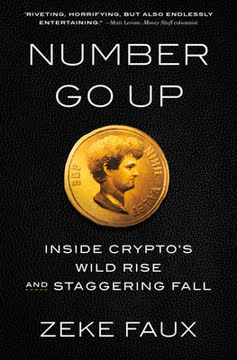
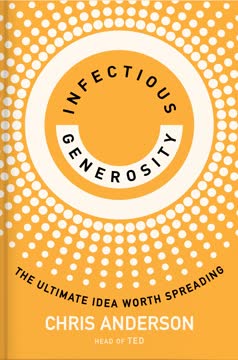
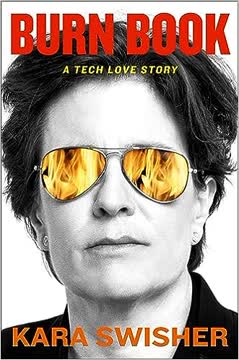

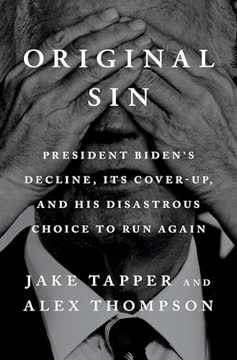
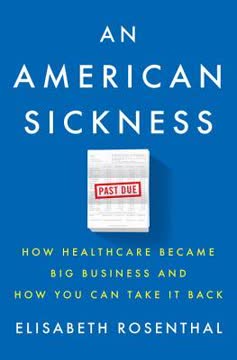
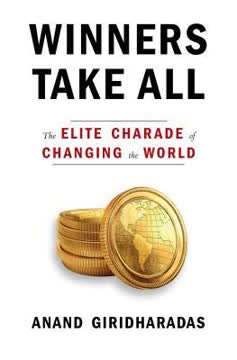
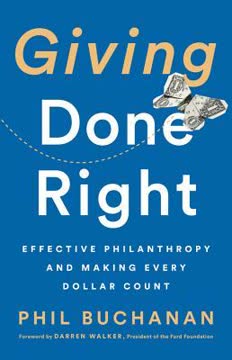

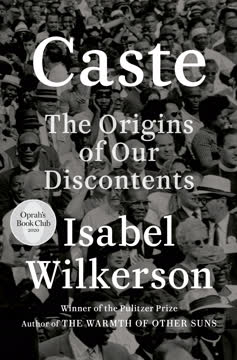
Download PDF
Download EPUB
.epub digital book format is ideal for reading ebooks on phones, tablets, and e-readers.





